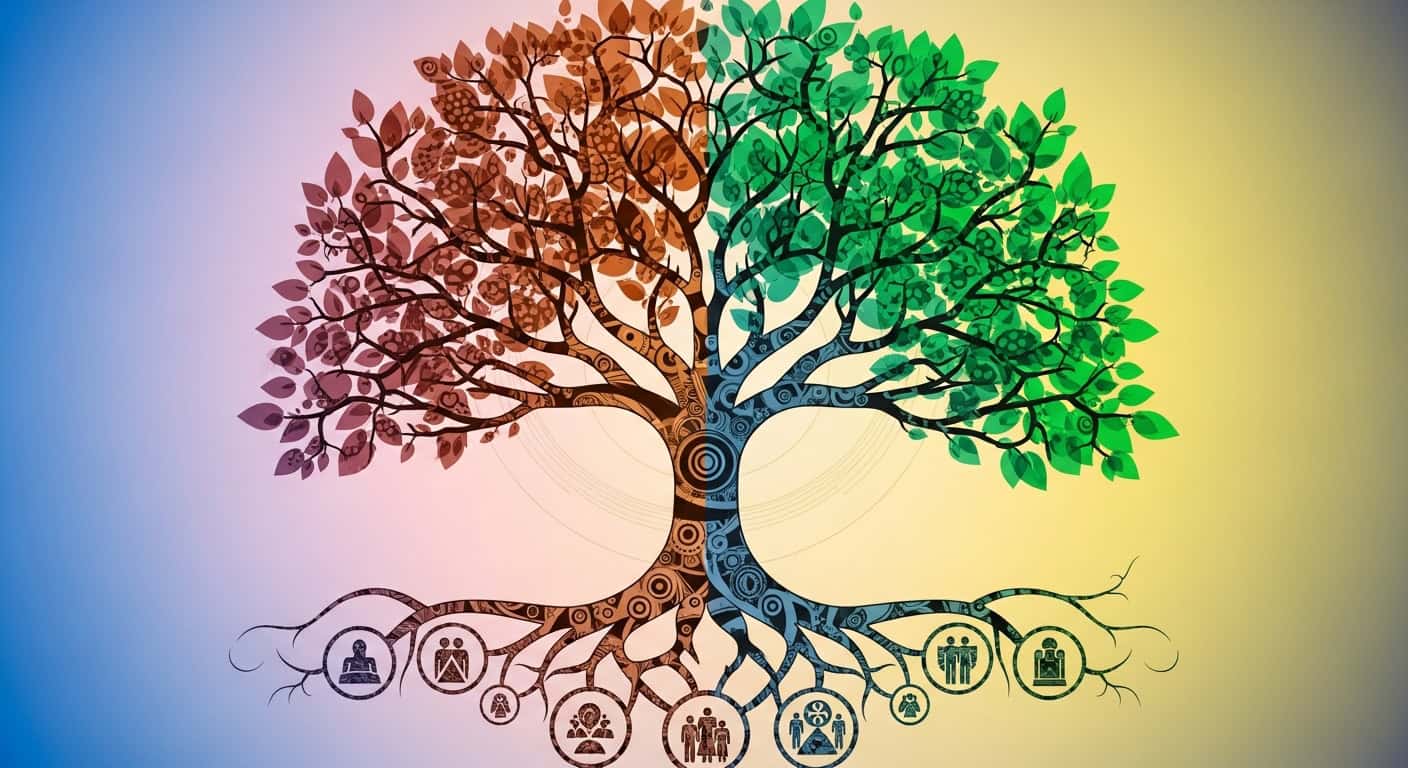How many times have you heard this story?
“My great-great-grandmother was a Cherokee princess.”
Or maybe: “We have Native American blood on my mother’s side.”
Or this classic: “My ancestor married an Indian chief’s daughter.”
These stories are everywhere. Passed down at family reunions. Whispered with pride. Defended with passion.
Here’s the thing: It’s probably not true.
But wait—before you close this article in anger, before you defend grandma’s honor, let me tell you something better.
The real story behind your family myth? It’s likely more interesting than any princess tale.
Every Family Has These Stories
Family myths are as American as apple pie.
They serve a purpose. They give us identity. Belonging. A sense of place in the vast American story.
Maybe yours isn’t a Cherokee princess. Maybe it’s:
- A connection to the Mayflower
- A Civil War hero
- An escaped aristocrat
- A famous outlaw’s cousin’s brother’s wife
These stories get passed down like precious heirlooms. Each generation polishes them. Adds details. Removes inconvenient facts.
It’s beautiful, really. It shows how much we want to matter. To belong. To be part of something bigger.
But sometimes, the truth is even better than the myth.
How Family Legends Are Born
Take this person’s story.
For generations, their family talked about a Cherokee princess in the lineage. DNA tests showed zero Native ancestry. Family members were heartbroken.
Then this family historian genealogist made a discovery: Great-great-great-grandmother’s middle name was Cinderella. And She lived in Cherokee, Iowa.
Mystery solved.
The “Cherokee Princess” was probably a pet name. A family joke. A play on location and a fairytale name that lost context over time.
This is how myths are made:
Geographic confusion: Your ancestor lived in Cherokee County. Three generations later, they were Cherokee.
Name evolution: German “Vogelsong” becomes “Birdsong.” Must be Native American, right?
Physical features: Great-grandma had black hair and tanned easily. In 1890s Minnesota, that made you “exotic.”
Filling in blanks: No records exist for grandma’s mother. She was “mysterious.” Mystery becomes mythology.
The DNA Test Moment
Modern DNA testing has created a reckoning.
Millions of Americans are discovering their cherished family stories aren’t true. It’s causing real grief. Real identity crises.
“Who are we if we’re not part Cherokee?”
“Why would grandpa lie?”
“But I’ve always felt connected to Native culture.”
These feelings are valid. The stories shaped you. They matter, even if they’re not factually true.
But here’s what I’ve learned from years of genealogy: The truth is almost always better.
What These Myths Often Hide
Family myths rarely come from nowhere. They’re usually covering something.
Sometimes it’s innocent:
- Recent immigrants seeming “different” in rural communities
- Unusual names getting misinterpreted
- Geographic proximity becoming genetic connection
Sometimes it’s more complex:
- Mixed-race ancestors in less tolerant times
- Jewish or Roma heritage hidden for safety
- Illegitimate children explained away
- Women who didn’t fit social norms
One person discovered their “Cherokee ancestor” was actually an escaped slave who married into their white family. Another found their “Indian princess” was a Welsh woman whose name—Appa Jane—sounded exotic but simply meant “daughter of Jane” in Welsh.
These real stories? They’re incredible. They speak to survival. Adaptation. The messy, beautiful reality of American families.
Becoming a Family History Detective
Want to find your real story? Start digging.
Begin with what you “know”:
- Who first told the story?
- When did this ancestor supposedly live?
- Where were they located?
- What specific tribe or nation?
Then look for evidence:
- Census records (check race, birthplace, parents’ birthplaces)
- Ship manifests
- Church records
- Local newspapers
- Land deeds
- etc.
Watch for clues:
- Middle names that might be place names
- Nicknames that might’ve been literal
- Immigration records around the time your “Native” ancestor appeared
- Actual Native American ancestors will often have documentation
One genealogist found “Cherokee” was actually her ancestor’s middle name. Another discovered “Pocahontas” was a family nickname passed down through generations—starting with someone who lived near the historical figure’s descendants.
When Myths Die and Truth Is Born
Losing a family myth hurts. I get it.
You’re not just losing a story. You’re losing part of your identity. The way you understood yourself in the world.
But here’s what I’ve seen happen next:
People find the real story. And it’s better.
Maybe your Cherokee princess was actually:
- A brave immigrant woman who crossed an ocean alone
- A widow who raised eight children on the frontier
- A woman who defied convention and owned her own business
- Someone who survived persecution and reinvented herself
These are your real ancestors. They deserve to be remembered for who they actually were.
Making Peace with the Truth
So what do you do when the myth crumbles?
First, recognize that grandma wasn’t lying. She was repeating what she believed. What she was told. What gave her family meaning.
These stories survived because they served a purpose. They explained something. Connected something. Made someone feel like they belonged.
Honor the myth for what it was: A way for your family to understand itself. To feel special. To claim their place in America’s story.
Then honor the truth for what it is: A chance to know your actual ancestors. To understand real history. To connect with people who really lived, really struggled, really survived.
Some family members will never accept the DNA results. That’s okay. Let them have their stories. You can know the truth while still respecting why the myth mattered.
The best part? You get to be the generation that discovers the real story. You get to solve the mystery. To find Cinderella from Cherokee, Iowa. To discover the immigrant who became a “princess.” To uncover the woman whose name meant “daughter of Jane” in Welsh.
You’re not destroying family history. You’re discovering it.
And trust me—after years of helping people find their roots—the real stories are always worth finding. Even when they’re ordinary. Especially when they’re ordinary.
Because ordinary people doing extraordinary things to survive? That’s the real American story.
The Stories We Keep
Family myths reveal what we value. Connection to the land. Survival against odds. Being special. Being American.
Now you get to decide which stories to keep.
Keep the myth as a beautiful artifact of your family’s hopes and dreams. It tells you what mattered to them. What they wanted to be true. That’s worth preserving—as mythology, not history.
Keep the search itself. The detective work. The “aha” moment when you finally solved the puzzle. That’s your story now.
And keep the truth. Whatever it is. However ordinary it seems.
Your ancestor might not have been a Cherokee princess. But she was someone who lived through times we can barely imagine. She made choices—to move, to marry, to survive—that led, eventually, to you.
That real person? She deserves to be remembered.
Even if—especially if—she was just Cinderella from Cherokee, Iowa.



I didn’t read your entire blog, but wanted to mention one important tidbit about the Cherokee and “Native Blood”. The Scots-Irish lived among the Cherokee and were considered members of the Cherokee. In fact, many prominent Cherokee, including several chiefs, were Scots-Irish. Among those were brothers Charles Renatus Hicks and William Hicks (Their father was Nathaniel Hicks. My wife descends from Nathaniel Hicks, through his son, also named Nathaniel Hicks). Nathaniel Sr fathered children with a native woman and a Scots-Irish woman.
Although they were all “non-Cherokee”, in the DNA sense, Nathaniel Hicks jr. and his son James H. Hicks lived with the Cherokee until the deaths of Chiefs Charles Renatus Hicks and William Hicks (1828) .